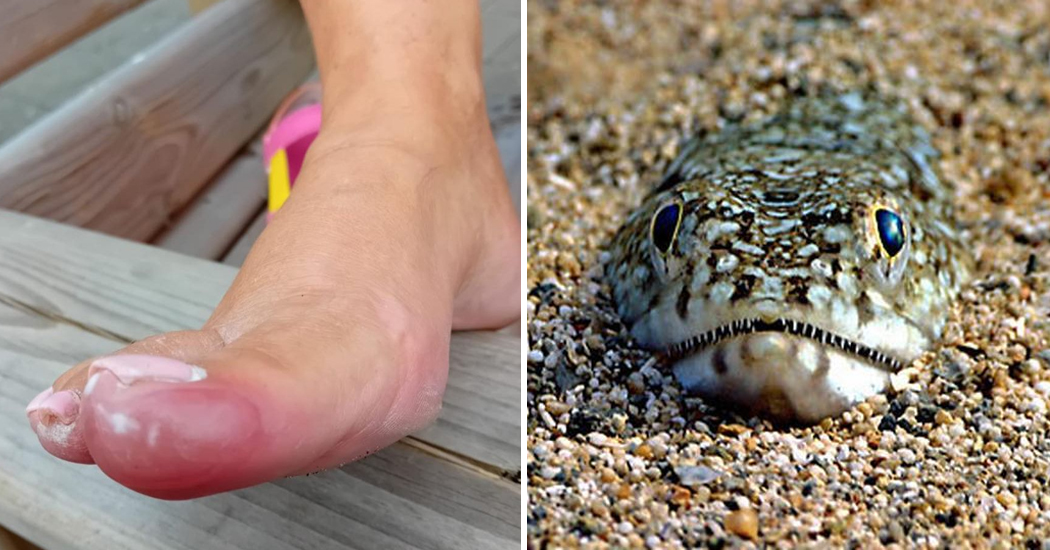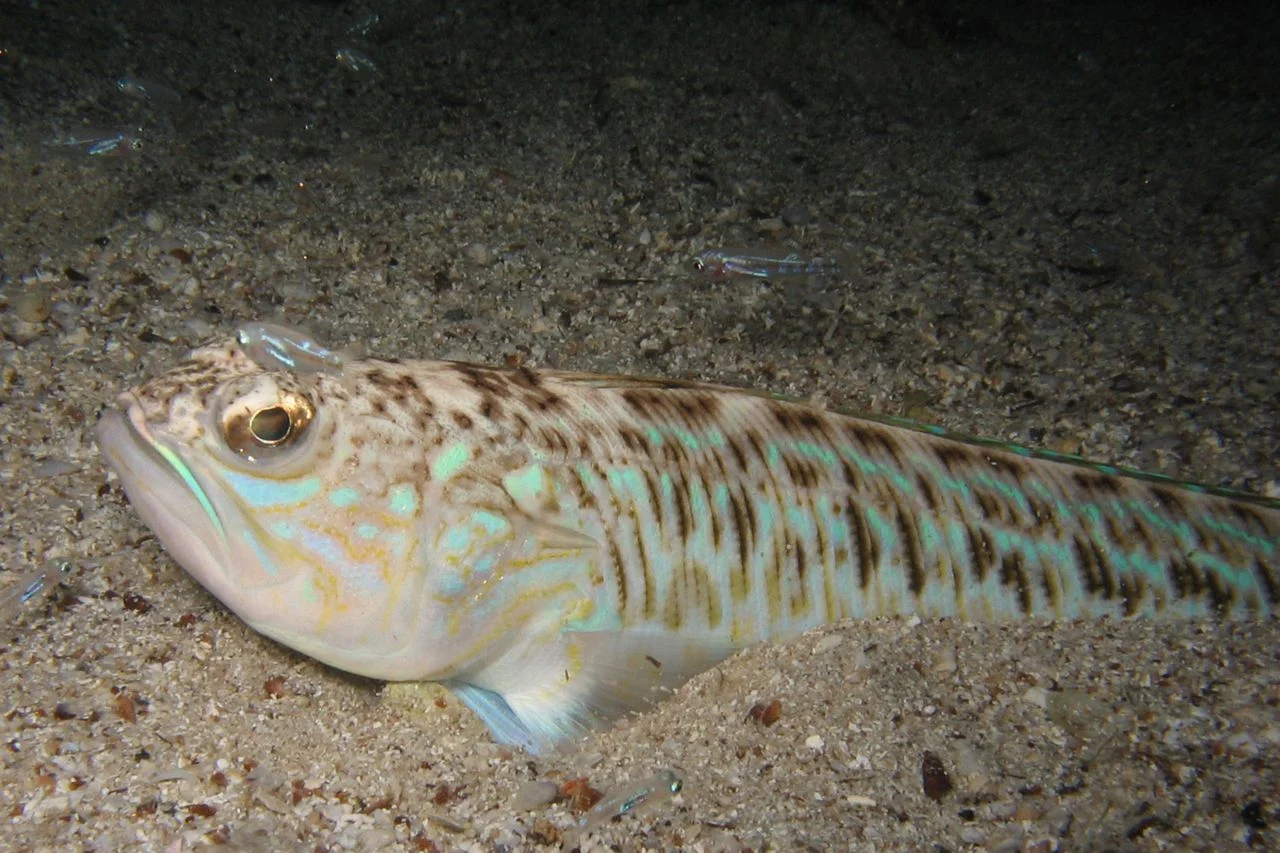
Beachgoers in Donegal, Ireland, are on high alert following a recent incident involving a weever fish in Donegal at Linsfort Beach, Buncrana, where a woman experienced a painful sting.
This venomous fish, often hidden in the sandy shores of Donegal’s beaches, has sparked warnings from local officials.
In this comprehensive guide, we’ll explore the dangers of weever fish Donegal, how to identify and treat a sting, and tips to stay safe while enjoying Ireland’s stunning coastline.
We’ll also address key FAQs about weever fish Ireland, their seasonal presence, and how to protect yourself.
The Weever Fish Threat in Donegal
The weever fish in Donegal has become a growing concern for locals and tourists alike, particularly after a notable incident on August 29, 2025, at Linsfort Beach in Buncrana.
A woman suffered a severe sting on her toe from a weever fish, a small but venomous species that lurks in shallow, sandy waters.
The sting was so potent that she reportedly burned her hands while attempting to remove the spine, highlighting the intensity of the venom. Local Councillor Jack Murray issued a public caution, urging beachgoers to enjoy Donegal’s beaches but remain vigilant for these hidden dangers.
Weever fish, known scientifically as Echiichthys vipera, are small, typically measuring 10-15 cm, but their dorsal fins are equipped with venomous spines that deliver excruciating pain.
This summer, Donegal has seen multiple reports of weever fish sting incidents, prompting authorities to raise awareness about this elusive marine creature. Unlike other coastal hazards, such as the Asian hornet in Ireland, weever fish pose a direct risk to beachgoers due to their camouflaged presence in the sand.
Understanding Weever Fish in Ireland

Weever fish are a common yet often overlooked hazard on Ireland’s beaches, including those in Donegal. These fish thrive in warm, shallow waters, particularly in sandy areas where they bury themselves, leaving only their venomous dorsal spines exposed.
The weever fish Donegal population is particularly active during the summer months, when beach activity peaks. Their ability to blend seamlessly with the sand makes them difficult to spot, increasing the risk of accidental stings.
The recent Buncrana incident underscores the importance of awareness. Councillor Murray emphasized, “Enjoy the beaches, but take care,” reflecting the balance between enjoying Donegal’s scenic coastline and staying safe from weever fish Ireland. With dozens of sting reports this summer, Donegal’s beaches, such as Linsfort, Rossnowlagh, and Bundoran, are hotspots for weever fish activity, making education and prevention critical.
FAQs About Weever Fish in Donegal
How Do You Know If You Got Stung by a Weever Fish?
A weever fish sting is unmistakable due to its immediate and intense pain, often described as a burning or stabbing sensation. Symptoms include swelling, redness, warmth, and numbness around the sting site, typically on the foot or ankle. The pain peaks within the first two hours but can persist if untreated. In the Buncrana incident, the victim experienced severe pain after stepping on a weever fish, with additional burns from handling the spine, highlighting the venom’s potency.
Is There Weever Fish in Ireland?
Yes, weever fish Ireland are present, particularly along sandy beaches in coastal counties like Donegal, Kerry, and Cork. They are commonly found in shallow waters, especially in summer. Donegal’s beaches, such as Linsfort and Rossnowlagh, are known hotspots, with multiple weever fish Donegal sting reports in 2025. Their presence is a natural part of Ireland’s marine ecosystem, but their venomous spines make them a hazard for beachgoers.
What Time of Year Are Weever Fish Around?
The weever fish season in Ireland peaks during the warmer months, typically from May to September, when water temperatures are higher. They are most active in the hour before and after low tide, when shallow waters warm up, attracting both fish and beachgoers. In Donegal, summer 2025 saw a surge in sting reports, likely due to increased beach activity and warm weather conditions.
Where Are Weever Fish Found?
Weever fish location is primarily in sandy, shallow waters along coastlines. In Ireland, they are found on beaches with soft sand, such as Linsfort Beach in Buncrana, Donegal, and other popular spots like Bundoran and Rossnowlagh. They bury themselves in the sand, making them nearly invisible, and are most prevalent in warm waters during low tide. Their camouflaged nature makes them a hidden danger for swimmers and waders.
What Happens If You Don’t Treat a Weever Fish Sting?
If a weever fish sting is not treated, the pain can persist for hours or even days, with swelling and numbness potentially worsening. In rare cases, untreated stings may lead to infection, especially if spines remain embedded in the skin. Secondary infections can require antibiotics, and there’s a risk of tetanus if the wound is not properly cleaned. The National Poisons Information Centre (NPIC) advises immediate treatment to alleviate pain and prevent complications.
How to Protect Yourself from Weever Fish?
To ensure weever fish protection, follow these tips:
- Wear protective footwear, such as water shoes or sandals, when walking in shallow waters, especially during low tide.
- Shuffle your feet while wading to disturb weever fish and encourage them to swim away.
- Check for lifeguard warnings or signs indicating weever fish presence on Donegal beaches.
- Avoid handling weever fish if spotted, as their spines can sting even after removal from the water.
- Stay informed about local conditions, as Donegal’s beaches have seen increased weever fish Donegal activity in 2025.
Treating a Weever Fish Sting
If you’re unfortunate enough to experience a weever fish sting, prompt treatment is essential to alleviate pain and prevent complications. The NPIC provides clear guidance for managing stings, as highlighted in the Buncrana incident:
- Seek Lifeguard Assistance: If a lifeguard is present, they can provide immediate help and access to hot water.
- Hot Water Immersion: Submerge the affected area (usually the foot) in hot water—as hot as tolerable without burning—for up to 90 minutes or until the pain subsides. Immerse the unaffected limb as well to gauge temperature, as numbness can mask scalding risks.
- Avoid Cold Applications: Ice or cold water can worsen the pain, unlike treatments for other marine stings.
- Pain Relief: Paracetamol can help manage pain, but ensure it doesn’t mask the heat of the water, which could lead to burns.
- Remove Spines: Carefully inspect the puncture site and remove any embedded spines using tweezers, as they can cause infection if left in place.
- Medical Attention: Consult a doctor, as a tetanus shot or antibiotics may be necessary, especially if signs of infection appear.
- Contact NPIC: Call the NPIC at 01 8092166 for further advice if you’ve been stung by a weever fish.
The Buncrana incident, where the victim burned her hands while removing the spine, underscores the importance of careful handling and immediate treatment. Proper care can significantly reduce the pain and prevent long-term issues.
Why Weever Fish Are a Concern in Donegal
The weever fish Donegal issue has gained attention due to the increasing number of sting reports in 2025. Donegal’s sandy beaches, such as Linsfort, are ideal habitats for weever fish, which thrive in warm, shallow waters. Their ability to bury themselves in the sand makes them a hidden hazard, particularly during the weever fish season from May to September. The surge in stings this summer is likely due to a combination of warmer waters and increased beach activity as tourists flock to Donegal’s scenic coastline.
Unlike other invasive species, such as the Asian hornet in Ireland, weever fish are a native part of Ireland’s marine ecosystem. However, their venomous spines pose a significant risk to beachgoers, especially children and those unaware of their presence. Public awareness campaigns, like Councillor Murray’s warning, aim to educate locals and visitors about the risks and prevention strategies.
Protecting Donegal’s Beaches
Donegal’s beaches are a cornerstone of the region’s tourism, attracting visitors with their stunning views and recreational opportunities. However, the presence of weever fish Donegal requires proactive measures to ensure safety. Local authorities are working to increase signage and lifeguard presence on high-risk beaches like Linsfort and Bundoran. Community efforts, such as sharing sting reports and safety tips, are also crucial in preventing incidents.
Beachgoers can play a role by staying informed and following weever fish protection guidelines. Simple actions, like wearing water shoes and shuffling feet while wading, can significantly reduce the risk of stings. Additionally, reporting sting incidents to lifeguards or the NPIC helps authorities track weever fish activity and improve safety measures.
Conclusion
The weever fish in Donegal is a hidden danger that demands respect and caution from beachgoers. The recent sting incident at Linsfort Beach, Buncrana, on August 29, 2025, serves as a stark reminder of the risks posed by these venomous fish. By understanding how to identify a weever fish sting, knowing where and when they’re active, and following safety tips, you can enjoy Donegal’s beaches with confidence. Whether you’re a local or a visitor, staying vigilant and prepared ensures a safe and enjoyable experience on Ireland’s stunning coastline. For more information on coastal hazards, including invasive species like the Asian hornet, visit Secret Ireland.






